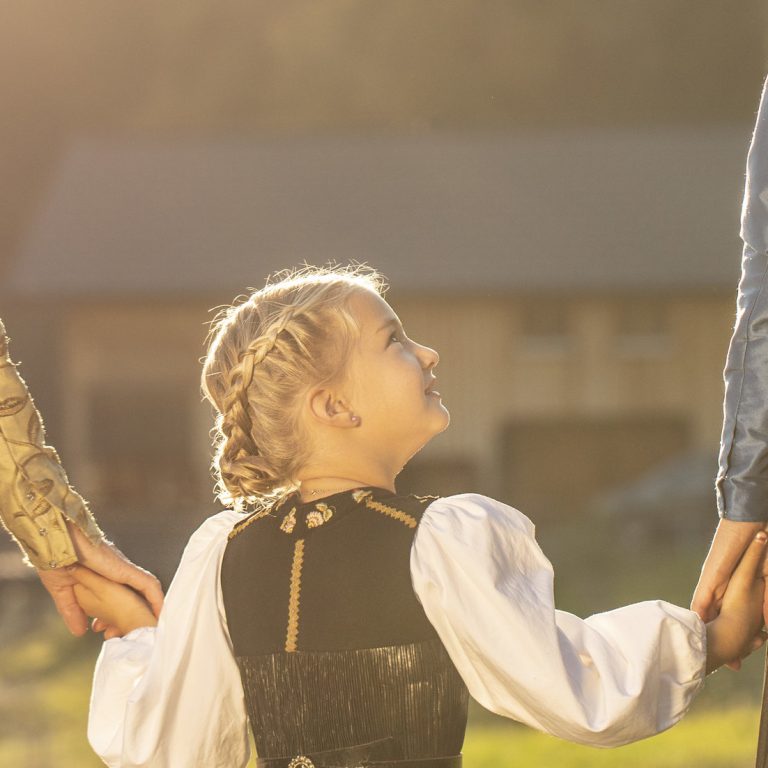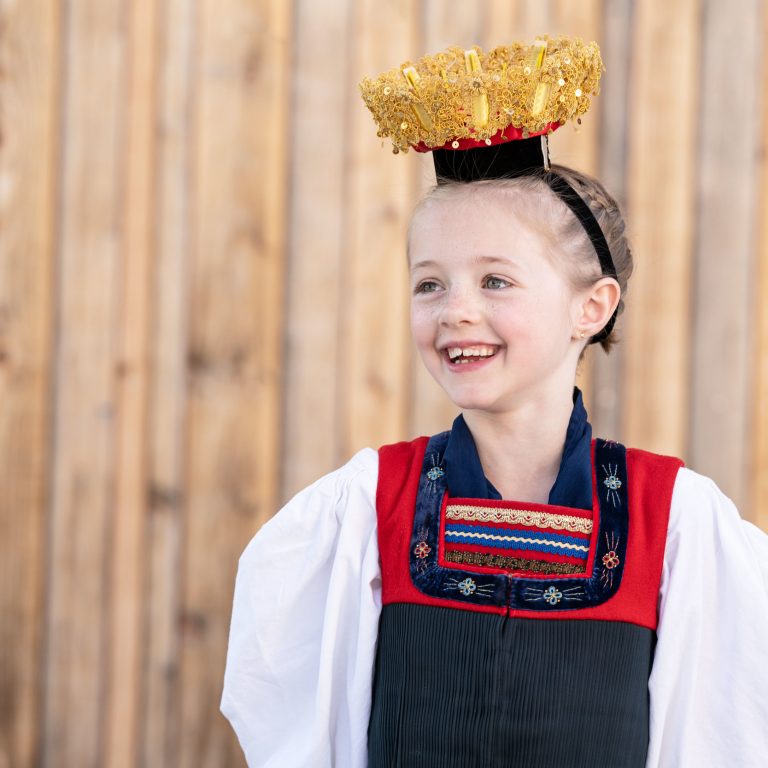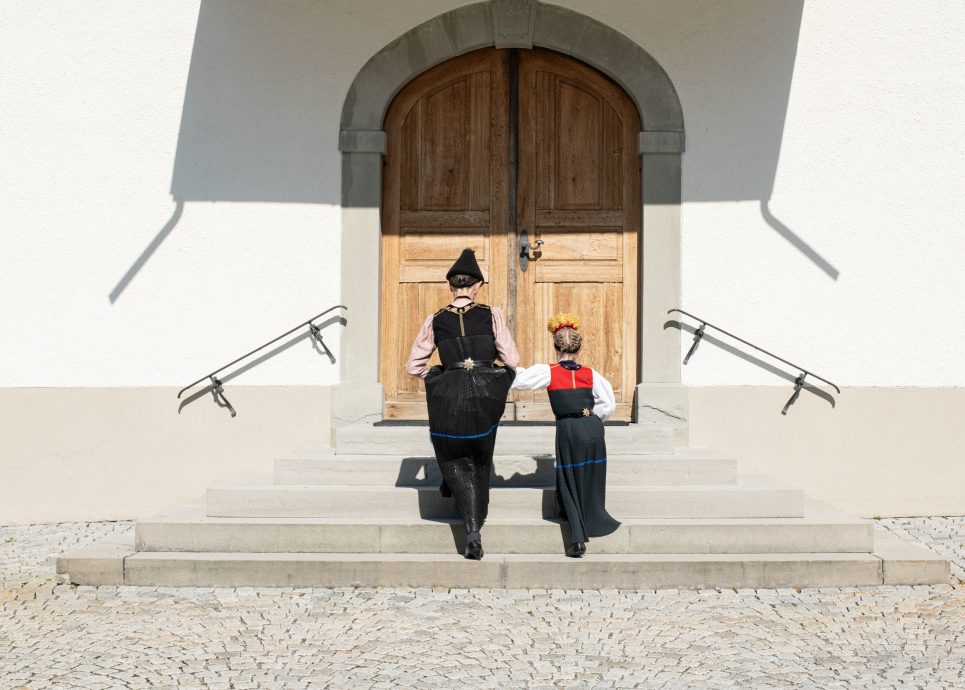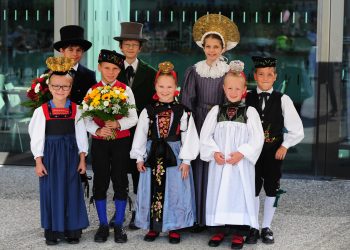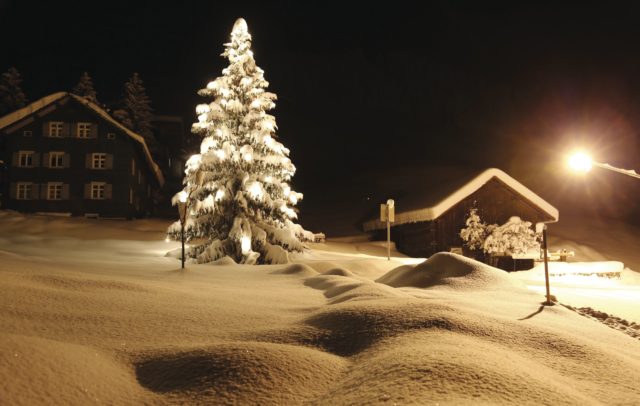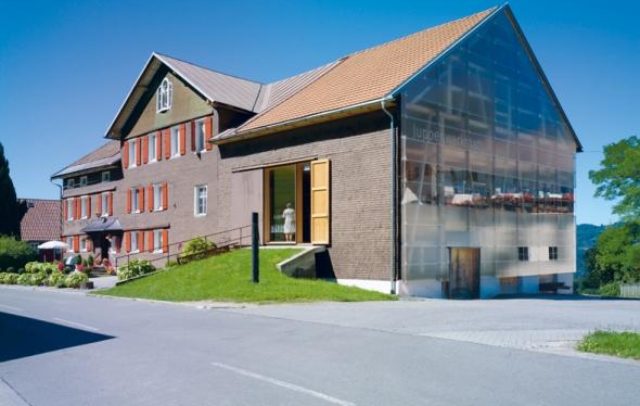Juppe, Schappale, Gold and Silver
Traditional costumes of Vorarlberg
Authentic traditions in Vorarlberg
In Vorarlberg, historical traditional costumes from almost all style periods are still worn today, starting with the oldest traditional costume in the Alpine region, the Bregenzerwald Tracht. A second style is the Montafonertracht, which was inspired by the Baroque period. Finally, there are the Städtetrachten (town costumes) from the Biedermeier period, which are mainly worn for representative purposes.
The Bregenzerwald women’s costume (“Juppe”)
is one of the most beautiful traditional costumes. In its original form, it represents the oldest traditional costume in the Alpine region: the Juppe with its pleated dress and the Schappale, a gold-crowned headdress. This dates back to the late 15th/early 16th century. In the Bregenzerwald, the women’s costume is affectionately called “Juppa.” Due to its Spanish influence, the Juppe was changed from its original white colour to black and fitted with its typical folds (ca. 500-600). The bodice of the Juppe can be red or black. A scarf (the Blätz) is tucked into the neckline, which features the typical Bregenzerwald (gold) embroidery. There are different types of headdresses: The famous “Schappale” is a gold tinsel crown, and is only worn by girls until the day of their wedding. Similarly, the Spitzkappe pointed cap is only worn when going to church. Even today, women still attach great importance to the use of elegant materials: gold, silver and silk. A black lacquer belt with a gold buckle in the middle of the back is worn with all traditional costumes. Today, the precious buckles are still made by hand in the Bregenzerwald.
Juppenwerkstatt Riefensberg
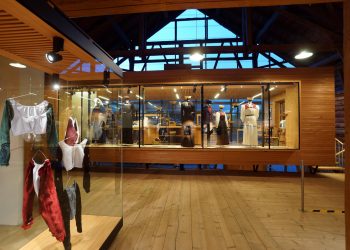
Juppe costumes are still made today in the Juppenwerkstatt workshop in Riefensberg. Several work steps are involved in this process. A visit to the museum in the Bregenzerwald, which is also architecturally attractive, is totally worthwhile!
Production of Bregenzerwald Juppe buckles:
Traditional costumes in Montafon
The Montafon traditional costume, inspired by the Baroque, is still worn today as a traditional garment of rural origin. The women’s costume in particular is made of high-quality fabrics in its various versions and is characterised by special craftsmanship and ornate decorations. The women’s costume has undergone several changes over the centuries, which have resulted in today’s appearance. In addition, other variations have evolved over the last 100 years, especially the Festtagstracht, the most beautiful historical costume in Montafon, is both exquisite and well-known. Several parts of the Montafon festive costume are embroidered by hand with silk thread. The motifs are blossoms and flowers native to the region as well as loops wrapped in gold thread. The different headdresses also have different meanings.
More information:
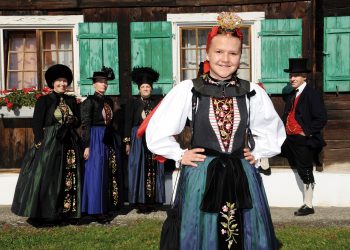
- The book “The traditional costumes of Montafon” (in German) is available at the Montafon tourist offices. Published by BUCHER Verlag, editor: Vorarlberger Landestrachtenverband. ISBN 978-3-99018-378-6
- More information about traditional costumes in Montafon
Where can you encounter traditional costumes today?
At different occasions you can also meet people wearing traditional costumes in everyday life. In all regions throughout Vorarlberg, e.g. in the Bregenzerwald, particularly in Schwarzenberg at every church service on Sunday, at weddings, festivals, processions such as Corpus Christi, at parades, e.g. at the Landestrachtentag or the harvest festival (Erntedankfest). There are numerous traditional music bands and traditional dance groups that perform in traditional costumes in addition to practicing authentic folk dance.
The vorarlberg museum features a collection of traditional costumes not only in the classical sense, but also in terms of relationship stories with a global context in terms of materials, techniques, production, and wearers.
The Vorarlberger Landestrachtenverband, an association of traditional costumes in Vorarlberg, has been in existence for over 50 years and comprises over 50 member associations. It is dedicated to the care and preservation of Vorarlberg traditional costumes and local customs. Here you can also find an overview of all the traditional costumes in the regions and towns in Vorarlberg.
A genuine traditional costume always has a link to a certain region and always has a historical background.

